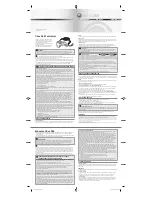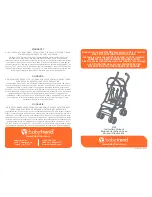
31-00083—02
22
CHECKOUT
Step 1. Check Installation and Wiring
Inspect all wiring connections at the controller terminals, and
verify compliance with installation wiring diagrams. If any
wiring changes are required, first be sure to remove power
from the controller before starting work. Pay particular
attention to:
• 24 Vac power connections. Verify that multiple controllers
being powered by the same transformer are wired with the
transformer secondary connected to the same input
terminal numbers on each controller. Use a meter to
measure 24 Vac at the appropriate terminals (see Fig. 15
on page 16). Controller configurations are not necessarily
limited to three devices, but the total power draw, including
accessories, cannot exceed 100 VA when powered by the
same transformer (U.S. only).
• Be sure that each controller has terminal 3 wired to a
verified earth ground, using a wire run as short as possible
with the heaviest gauge wire available, up to 14 AWG (2.0
sq mm) with a minimum of 18 AWG (1.0 sq mm) for each
controller in the group (see Fig. 15 on page 16).
• Verify that Triac wiring of the digital outputs to external
devices uses the proper load power and 24 Vac common
terminal (digital output common terminals) for High-Side
switching.
NOTE:
All wiring must comply with applicable electrical codes
and ordinances or as specified on installation wiring diagrams.
For guidelines for wiring run lengths and power budget, see
"Power" on page 13.
VERIFY TERMINATION MODULE PLACEMENT
(MULTIPLECONTROLLERS ONLY)
The installation wiring diagrams should indicate the locations
for placement of the 209541B termination module(s). See Fig.
16 on page 17 and refer to the "LONWORKS® Bus Wiring
Guidelines," form 74-2865. Correct placement of the
termination module(s) is required for proper LONWORKS®
Bus communications.
Step 2. Startup
Refer to Fig. 21 and the following text for startup information.
Fig. 21. LED, service pin, and network connection
locations
BROADCAST THE SERVICE MESSAGE
The Service Message allows a device on the LONWORKS®
Bus to be positively identified. The Service Message contains
the controller's Neuron® ID number and node type. This is
used to confirm the physical location of a particular Stryket
device in a building.
• To send the Service Message from the controller, press the
NEURON® Service Pin pushbutton on the controller (see
Fig. 21 above, and Fig. 18 on page 19). This button sends
out the Service Message when it is pressed, regardless of
the controller's current mode of operation.
CAUTION
Equipment Damage Hazard.
Can cause controller damage or failure.
Do not use any metal object to press the NEURON® Service
Pin. Use a plastic rod or wood device (such as a pencil with
the lead broken off) to press the pin. Using a metal object can
damage the circuitry of the controller.
CONTROLLER STATUS LED:
The LED on the front of the controller provides a visual
indication of the status of the device. When the controller
receives power, the LED appears in one of the following
allowable states, as described in Table 11.
TERMINALS 1-12
TERMINALS 13-24
M33673
LED
1 1 1 1 1 1 1 2 2 2 2 2
3 4 5 6 7 8 9 0 1 2 3 4
UI-4
COM
UI-3
UI-2
COM
UI-1*
AO
-2
COM
AO
-1
COM
DO-2
DO-1
1 1
1 2 3 4 5 6 7 8 9 0 1 2
COM
DO-4
COM
DO-3
NET
-2
NE1-2
S-B
U
S 2
S-B
U
S 1
20VDC
EGND
24V
AC COM
24V
A
C
















































